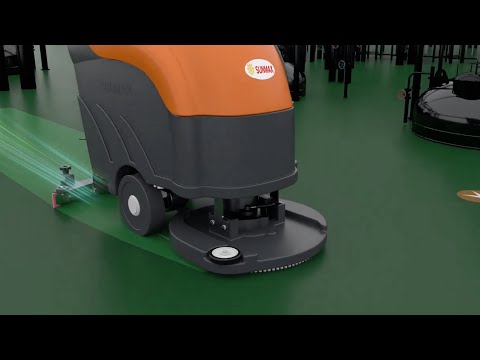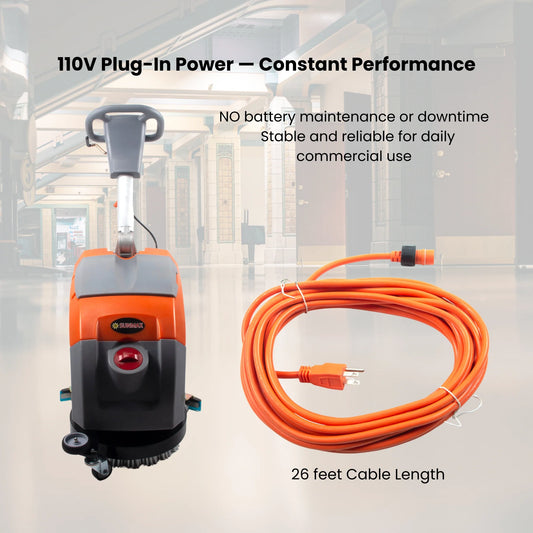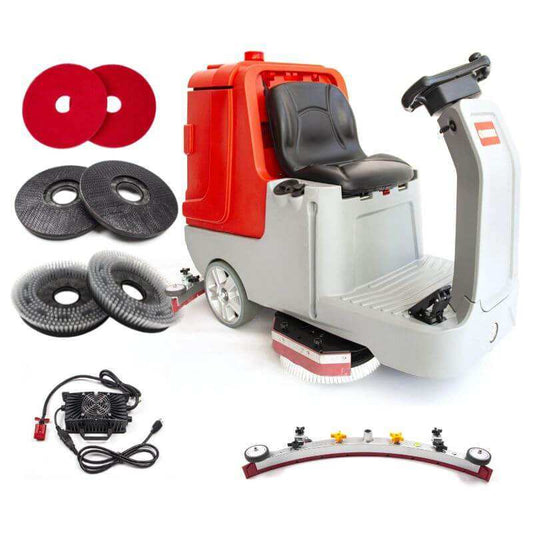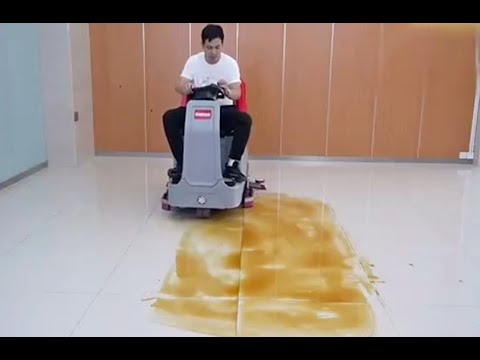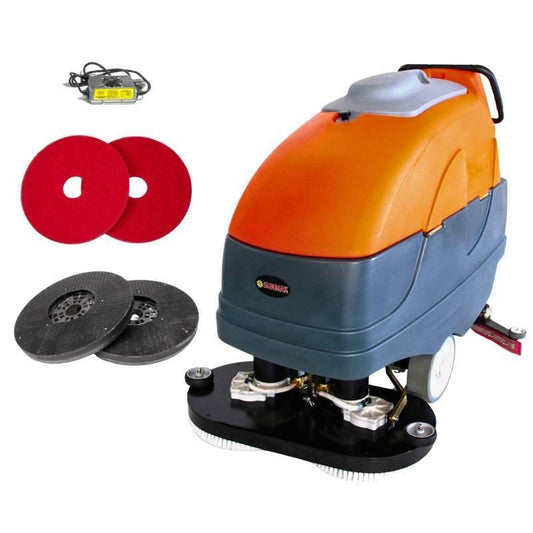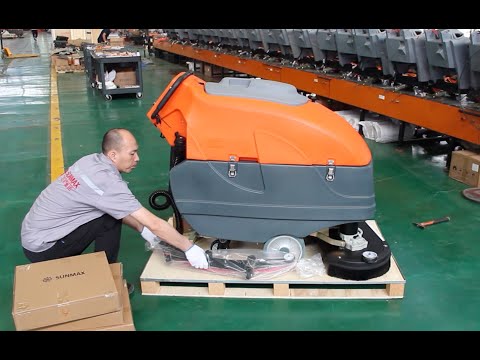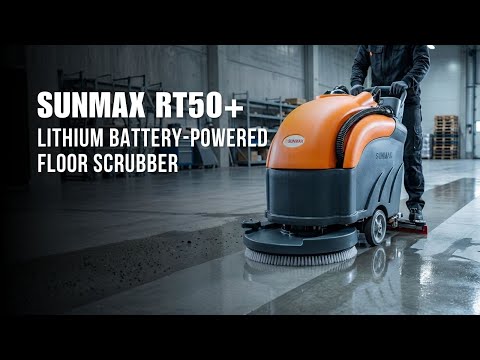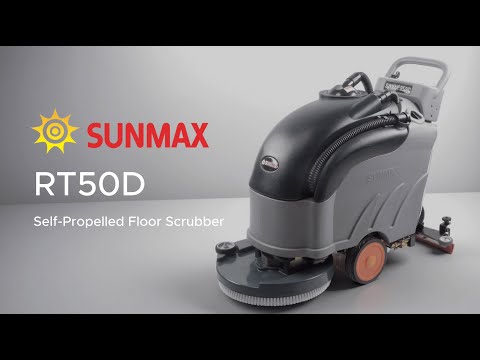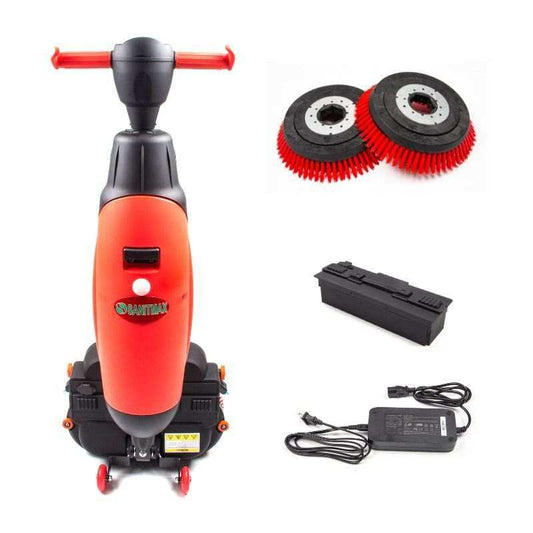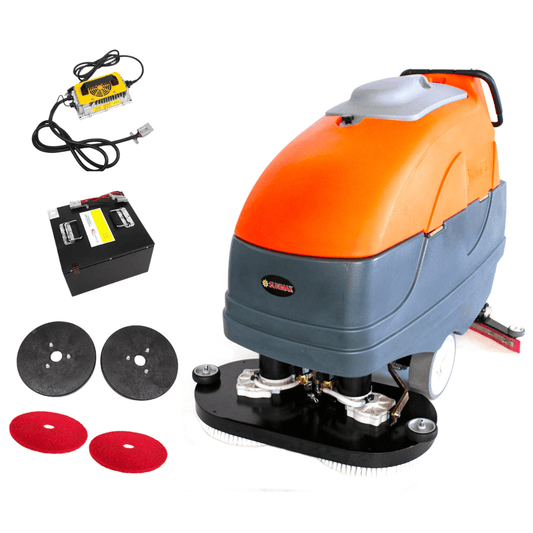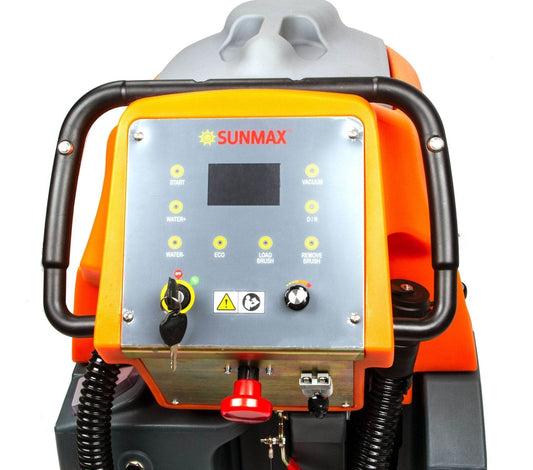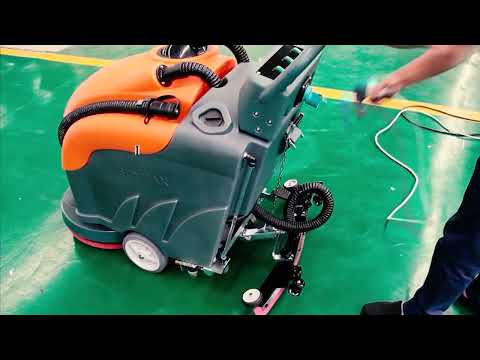-
Experience superior cleaning with SUNMAX Commercial Floor Scrubbers—direct from factory, backed by a 2-year warranty. Compact and ergonomic, with a user-friendly LCD display and robust, corrosion-resistant build. Quick brush changes for fast, hassle-free maintenance. Upgrade your cleaning solution today!
-
- 14" - 34" Cleaning width
- 14,500 - 80,000 ft²/hr Efficiency
- 3.5-6 Hours working time(Battery-Powered)
- 1 - 34.3 gal sewage tank
- Suitable For Hard Floors
-
RT50 Walk-Behind Floor Scrubber – 22" Battery-Powered Commercial Floor Cleaning Machine, 14.5-Gal Recovery Tank, for Warehouse, School & Hospital
Regular price $2,499.00 USDRegular price -
RT35AC Electric Walk-Behind Floor Scrubber, 17" Brush, 19,000 sq ft/hr Efficiency Commercial Floor Cleaning Machine for Hard Floors
Regular price $1,899.00 USDRegular price -
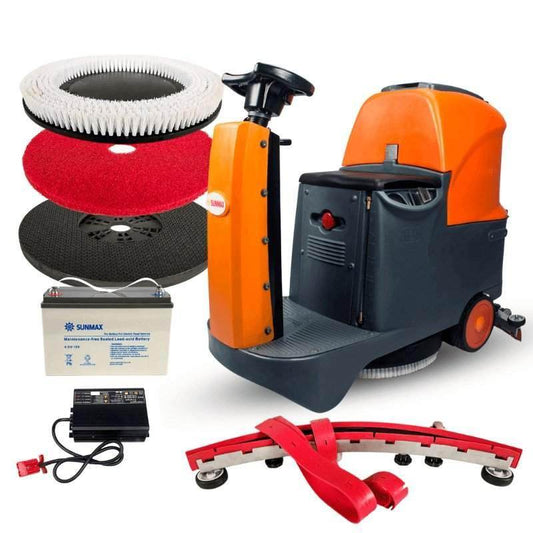

RT70 Ride On Floor Scrubber Machine, 22" Brush Cleaning Path, 48000 Sqft/h Efficiency
Regular price $3,499.00 USDRegular price$3,999.00 USDSale price $3,499.00 USDLimited-time Sale -

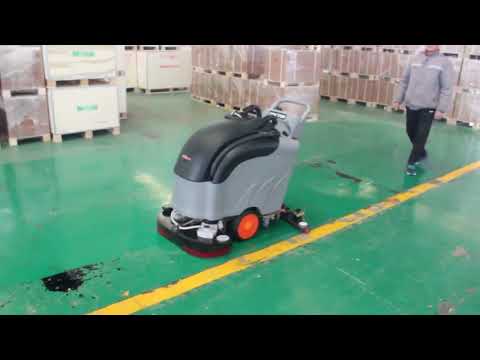 Limited-time Sale
Limited-time SaleRT50DW 28" Dual Brushes Self-Propelled Floor Scrubber Dryer Machine
Regular price $3,299.00 USDRegular price$3,599.00 USDSale price $3,299.00 USDLimited-time Sale -

 Limited-time Sale
Limited-time SaleRT15 14" Battery Powered Commercial Floor Scrubber Machine
Regular price $1,449.00 USDRegular price$1,599.00 USDSale price $1,449.00 USDLimited-time Sale -
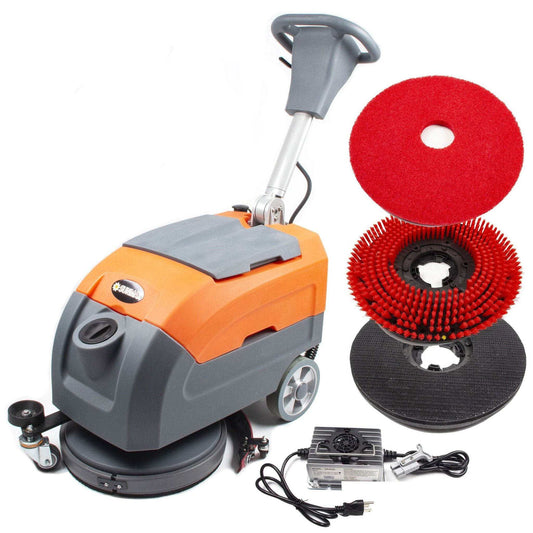
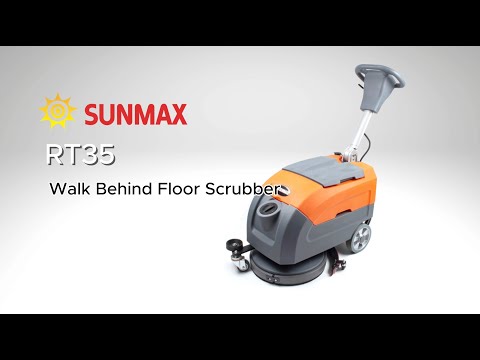
RT35 17" Walk Behind Floor Scrubber Machine, 19000 sqft/h, with Anti-Collision Wheel
Regular price $1,999.00 USDRegular price$2,099.00 USDSale price $1,999.00 USDLimited-time Sale -
SM860 34" Ride-On Floor Scrubber Dryer Machine
Regular price $4,699.00 USDRegular price -
RT120 34" Self-Propelled Floor Scrubber Machine, 33-gal Tank, 75,000 sqft/h
Regular price $4,199.00 USDRegular price -
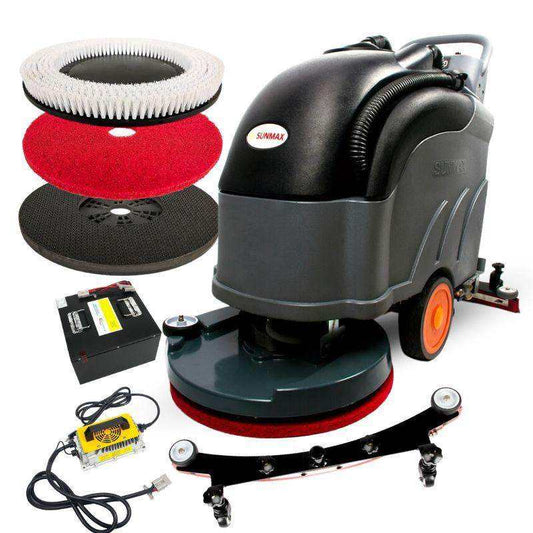
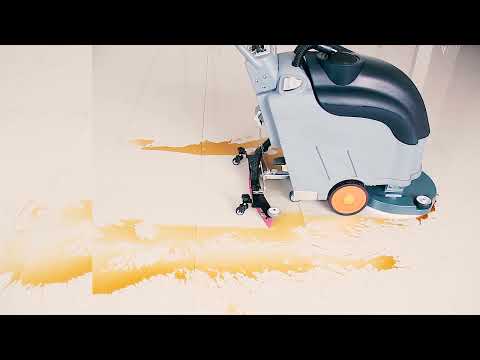
RT50D+ Self-Propelled Battery Powered Floor Scrubber Dryer, 22" Brush Cleaning Path, Lithium Battery
Regular price $3,299.00 USDRegular price -
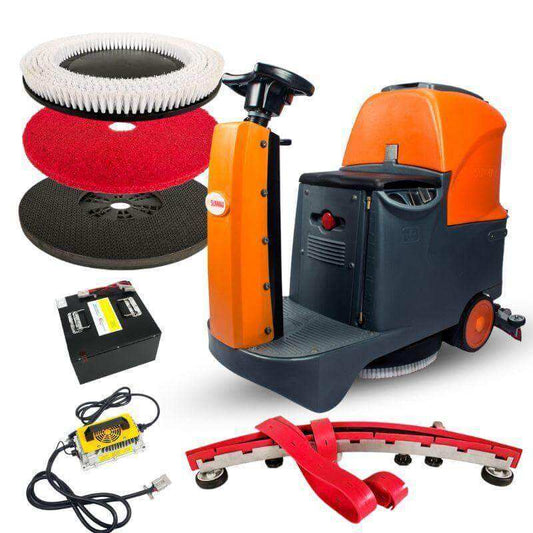
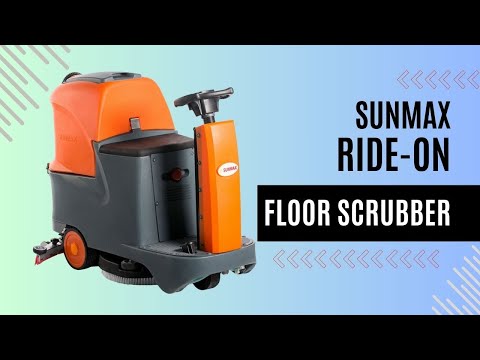
RT70+ Industrial Ride On Floor Scrubber Machine, Lithium Battery, 22" Cleaning Path, 48000 Sqft/h Working Efficiency
Regular price $3,699.00 USDRegular price$4,199.00 USDSale price $3,699.00 USDLimited-time Sale -
22" Battery-Powered Floor Scrubber Machine | RT50+ Lithium Warehouse Floor Cleaner
Regular price $2,799.00 USDRegular price -
RT50D Self Propelled Floor Scrubber - 22" Width, 36,000 sqft/h Dryer, 22" Cleaning Width, 36,000 sqft/h
Regular price $2,899.00 USDRegular price -
SM430 17" Walk-behind Automatic Floor Scrubber Machine, 360 Degree Rotating Head, 10000 sqft/h, Cordless Rechargeable Lithium Battery
Regular price $1,599.00 USDRegular price -
RT120+ 34" Self-Propelled Floor Scrubber Machine, Lithium Battery, 33-gal Tank, 75,000 sqft/h
Regular price $4,699.00 USDRegular price -


RT15+ 14" Compact Walk behind Floor Scrubber, Heavy Duty Brush, 14500 sqft/h, Lithium battery
Regular price $1,549.00 USDRegular price$1,699.00 USDSale price $1,549.00 USDLimited-time Sale -

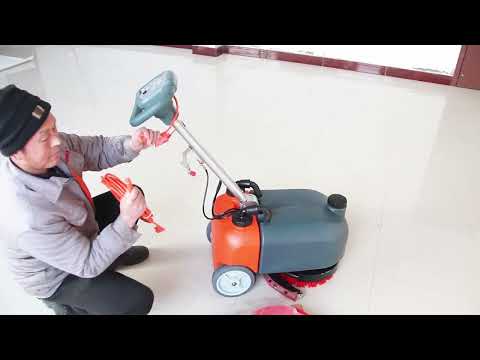
RT15AC 14“ Walk Behind Floor Scrubber Machine for Industrial Commercial Use, 26 ft Cord Offers Uninterrupted Power Supply
Regular price $1,399.00 USDRegular price$1,499.00 USDSale price $1,399.00 USDLimited-time Sale -
RT50AC Walk-behind Commercial Floor Scrubber, 22" Cleaning Path, 22 ft Power Cord
Regular price $2,199.00 USDRegular price
Floor Scrubber Machines: Frequently Asked Questions
Find answers to common questions about commercial floor scrubbers, including types, operation, maintenance, and selecting the right machine for your facility.
What is a floor scrubber machine and how does it work?
A floor scrubber machine is an automated cleaning device that scrubs, cleans, and dries hard floors in a single pass. The machine dispenses cleaning solution onto the floor, uses rotating brushes or pads to agitate and remove dirt, and then vacuums up the dirty water using a squeegee system.
Commercial floor scrubbers typically feature solution tanks (for clean water and detergent) and recovery tanks (for dirty water), powered by either batteries or electrical cords. This method is significantly more efficient than traditional mopping, reducing cleaning time by up to 75% while providing superior cleaning results.
What is the difference between walk-behind and ride-on floor scrubbers?
Walk-behind floor scrubbers are operator-guided machines suitable for small to medium-sized areas (typically 10,000-50,000 square feet). They feature cleaning paths of 14-26 inches and are more maneuverable in tight spaces, making them ideal for retail stores, schools, and smaller warehouses.
Ride-on floor scrubbers allow the operator to sit on the machine, making them ideal for large facilities over 50,000 square feet. They typically have cleaning paths of 22-34 inches or larger and can clean up to 75,000 square feet per hour, significantly reducing operator fatigue during extended cleaning sessions.
How long does a battery-powered floor scrubber run on a single charge?
Battery runtime varies by model, battery type, and usage conditions. Lead-acid battery floor scrubbers typically run 2.5-3.5 hours per charge, while lithium-ion battery models can operate 3-5 hours.
Lithium batteries charge faster (2-3 hours vs 8-10 hours for lead-acid), last longer (3,000+ cycles vs 1,000-1,500 cycles), and require less maintenance. Actual runtime depends on factors such as floor type, cleaning intensity, machine speed, and whether self-propelled features are used.
What size floor scrubber do I need for my facility?
Floor scrubber size selection depends on your facility's square footage and layout:
Under 15,000 sq ft: A 14-17 inch walk-behind scrubber is ideal for spaces with narrow aisles and tight corners.
15,000-50,000 sq ft: Choose a 20-26 inch walk-behind or self-propelled model for medium-sized facilities.
Over 50,000 sq ft: Ride-on scrubbers with 28-34 inch cleaning paths provide maximum efficiency for large warehouses and facilities. Consider door widths, aisle dimensions, and obstacles when selecting cleaning path width.
What is the typical cost of a commercial floor scrubber?
Commercial floor scrubber prices vary by type and features:
Compact walk-behind models (14-17 inches): $1,400-$2,000
Medium walk-behind and self-propelled (20-26 inches): $2,200-$3,300
Ride-on floor scrubbers (28-34 inches): $3,300-$4,700
Lithium battery models cost approximately $200-$500 more than lead-acid equivalents but offer lower total cost of ownership due to longer battery life, reduced maintenance, and faster charging times.
Can floor scrubber machines clean different types of flooring?
Yes, commercial floor scrubbers effectively clean multiple hard floor types including concrete, tile, vinyl composite tile (VCT), terrazzo, sealed hardwood, epoxy-coated floors, and non-slip surfaces.
Different brush types optimize performance: cylindrical brushes excel on textured concrete and grout lines, while disc brushes work well on smooth surfaces. Pad drivers with different pad types (red for light cleaning, blue for medium, black for heavy stripping) adapt to various floor conditions. Always verify flooring is properly sealed before using water-based cleaning equipment.
How much maintenance do floor scrubber machines require?
Daily maintenance: Empty and rinse recovery tanks, clean squeegee blades, and check brush condition.
Weekly tasks: Inspect hoses for clogs, clean vacuum filters, and check battery water levels (for lead-acid batteries).
Monthly maintenance: Deep-clean tanks with vinegar solution, inspect brushes for wear, and check squeegee blade alignment. Brushes typically need replacement every 3-6 months depending on usage and floor type. Lithium batteries require minimal maintenance compared to lead-acid batteries which need regular water top-ups and equalization charging.
What is the difference between self-propelled and manual push floor scrubbers?
Manual push floor scrubbers require the operator to physically push the machine, which can cause fatigue during extended cleaning sessions. They're lighter, more affordable, and suitable for smaller areas or intermittent use.
Self-propelled floor scrubbers feature motorized traction drive that moves the machine forward with minimal effort from the operator, who simply guides and steers. Self-propelled models reduce operator fatigue by 60-70%, increase productivity, and are essential for larger facilities, longer cleaning shifts, or operators with physical limitations.
Are corded or battery-powered floor scrubbers better?
Battery-powered floor scrubbers offer greater mobility, eliminate tripping hazards from power cords, and allow uninterrupted cleaning across multiple rooms and floors. They're ideal for facilities over 5,000 square feet and areas without convenient power outlets.
Corded electric floor scrubbers provide unlimited runtime without battery recharging concerns and slightly lower purchase costs. They're best for smaller facilities (under 5,000 sq ft), single-room applications, or situations requiring extended continuous operation. Battery technology advancements, particularly lithium-ion, have made cordless machines increasingly popular for their convenience and efficiency.
How do I calculate the productivity of a floor scrubber machine?
Floor scrubber productivity is calculated using the formula:
Cleaning Path Width (inches) × Machine Speed (feet per minute) × 60 minutes × Efficiency Factor (typically 0.75-0.85) = Square Feet Per Hour
For example, a 22-inch scrubber traveling at 200 feet per minute with 80% efficiency cleans approximately 35,000 sq ft/hour. Manufacturers provide rated capacities, but actual productivity depends on floor conditions, operator experience, obstacles, and cleaning requirements. Dual-brush systems can increase productivity by 40-50% compared to single-brush models of similar width.



